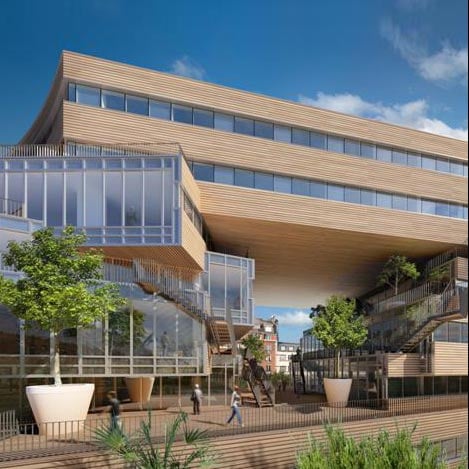
Pushed Slab by MVRDV
Dutch architects MVRDV have unveiled their design for an office building in Paris, where the middle section will appear broken and twisted open.
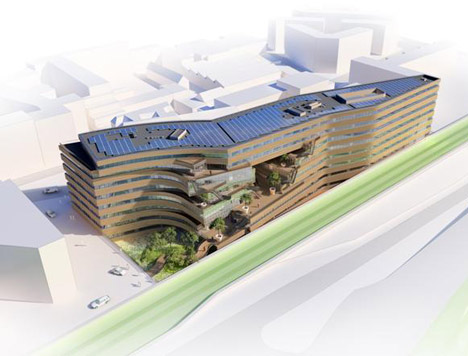
Called Pushed Slab, the office building requires this window through the middle to maintain views of a historic building beyond.
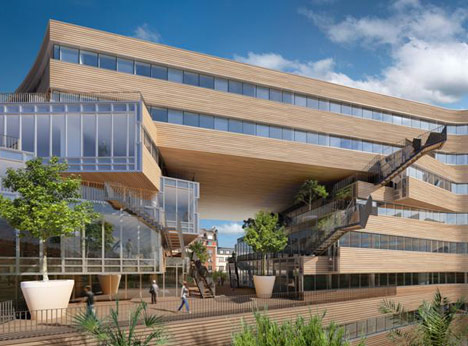
The twisted layers form terraces for the building's workers on the south side.

Here's some more information from MVRDV:
MVRDV presents the Pushed Slab, energy efficient office building, Paris
ICADE Promotion and MVRDV present the design for the Pushed Slab office building at ZAC Gare de Rungis in the 13th arrondissement of Paris. The 19.000 m2 building will be one of the first low energy buildings realised in France; with low energy consumption and an energy production of appr. 200.000kWh per year. Construction of the 35 million Euro building commissioned by French project developer ICADE Promotion is expected to start 2011.
The Pushed Slab is located between two completely different urban grids: the dense city fabric of blocks and streets in the North and the loose urban fabric in the south with its clear defined and straightforward infrastructure. The design is based on the requested office program and the energy requirements. The project combines proven energy efficiency technologies with individual office floors and outside spaces such as patios, balconies and a garden. The building is highly flexible offering three cores and a central lobby; it can be rented out to one or various tenants without structural changes.
The building is located on a former rail embankment of approximately 4.150m ². The volume follows the site restrictions, a slab shaped volume of 150 m long and 21 m wide. An opening in the volume preserves the view of a historic building. To create this urban window and to enhance the urban quality of the neighbourhood, the slab is “pushed” until it breaks, then twisted and pushed to the south. This pushing act creates a distortion of the floors, offering multiple terraces which can be directly accessed from the work areas as well as from the external staircases. The urban window offers a large terrace on the second level. The terrace and the balconies will be furnished with trees planted in large pots, offering employees a friendly environment to relax.
The building has two faces: a calm side in dialogue with the urban fabric of the north side of Paris, and a more dynamic side facing south, rectangular to the boulevard. The building is wrapped in a skin of wood. The windows form a rhythmic ribbon, offering optimal sunning and light control of the inner spaces. To contribute to the sustainable development and taking the impact of deforestation into account, certified wood from France will be used. The climate is controled by natural ventilation; 1500m2 solar panels on the roof provide renewable energy and a grey water circuit will be applied. Blinds will be integrated in the south facade and in the cuts. The building will be insulated from the outside in order to reduce thermal bridges. The accumulation of these proven reliable techniques results in a highly efficient low energy building which leads to an energy consumption of 49 kWh per m2 per year.
The project is part of the ZAC Gare de Rungis development, according to the mayor of the arrondissement Jerome Coumet “The first Eco-quarter of Paris, the first presented and the first to be completed.” The building is designed by MVRDV in cooperation with local architect North by North West, in a joint effort with the engineering and advisory firms ARCOBA (Saint Denis), Casso, Terrell, Vanguard and Alto, all located in Paris.
See also:
.
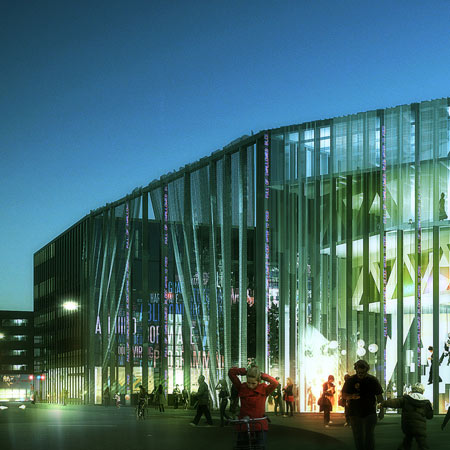 |
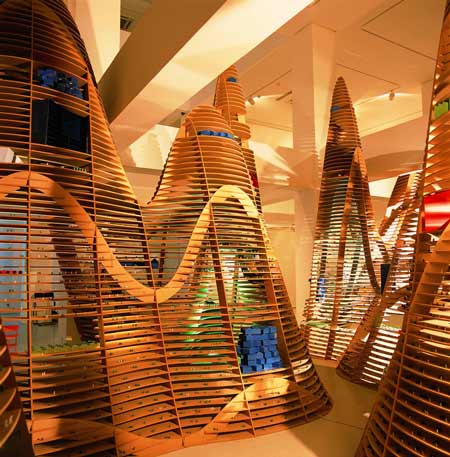 |
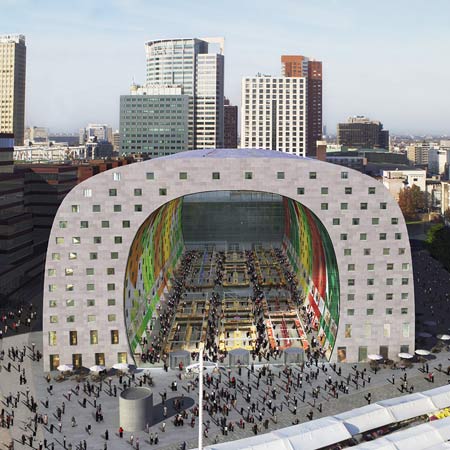 |
| House of Culture and Movement by MVRDV | China Hills by MVRDV |
Rotterdam Market Hall by MVRDV |